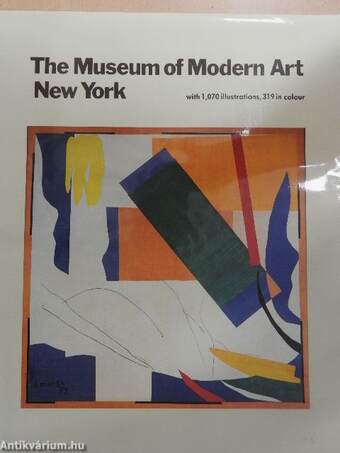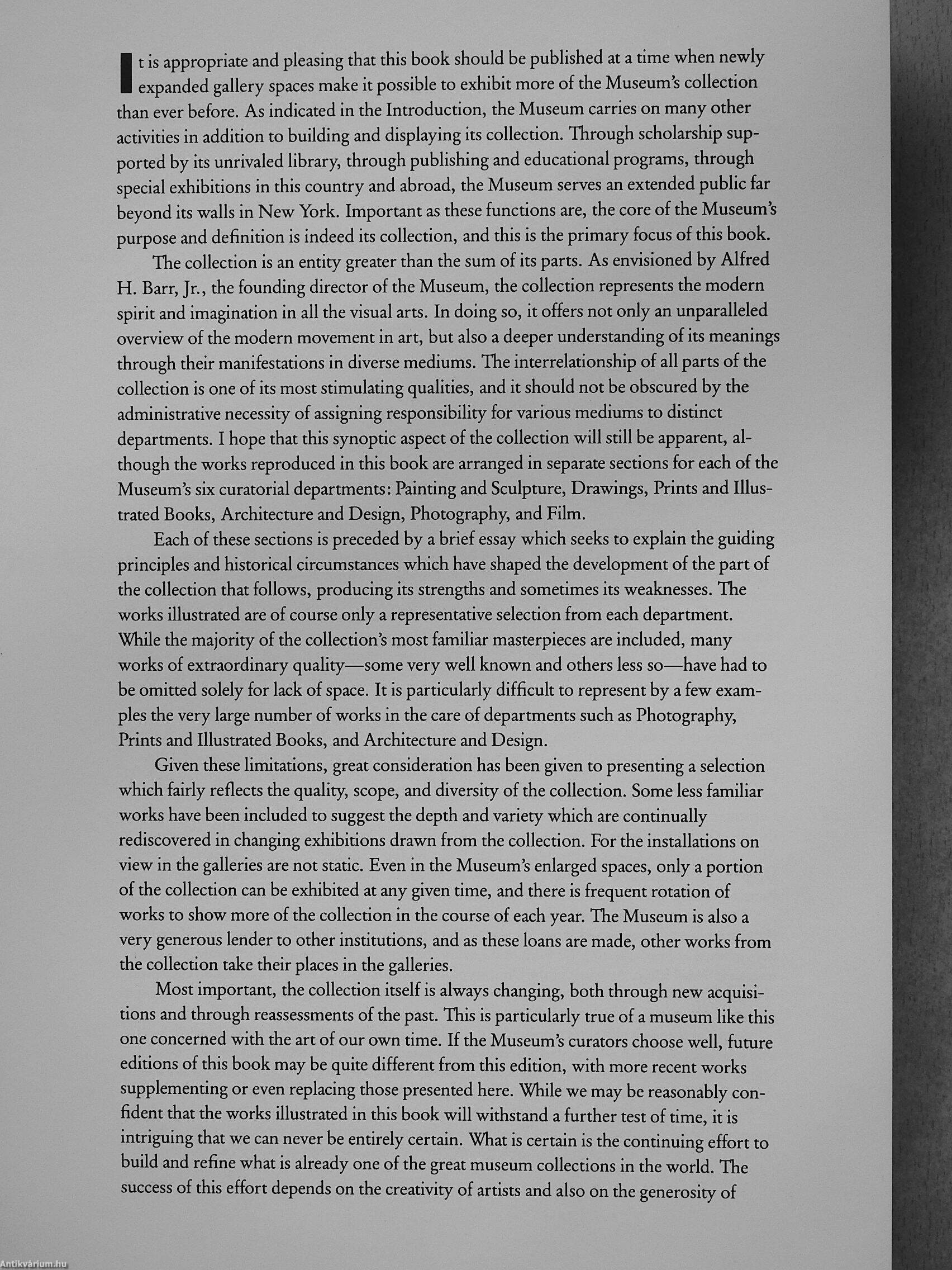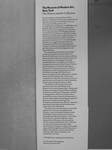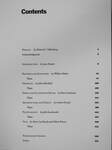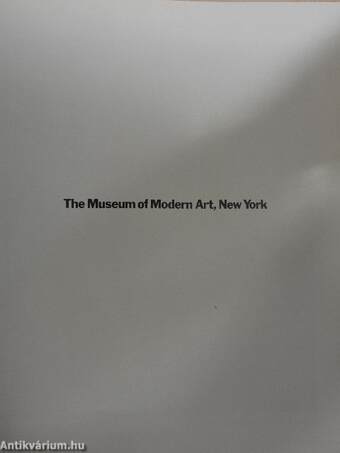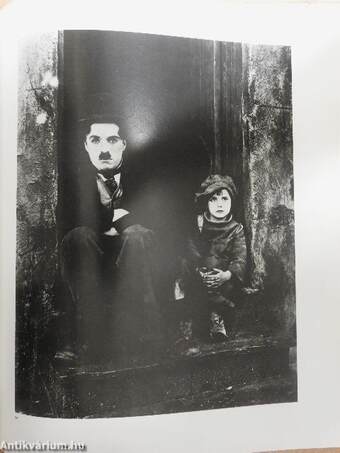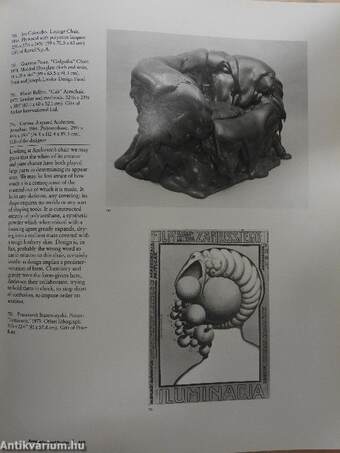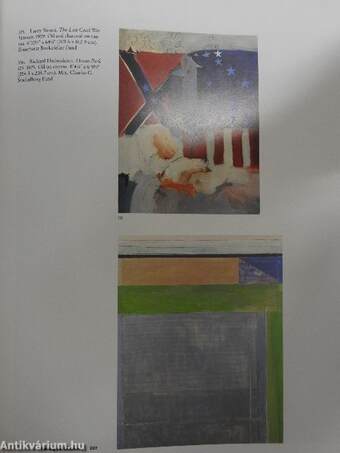1.067.317
kiadvánnyal nyújtjuk Magyarország legnagyobb antikvár könyv-kínálatát

VISSZA
A TETEJÉRE
JAVASLATOKÉszre-
vételek
The Museum of Modern Art, New York
with 1,070 illustrations, 319 in colour
| Kiadó: | Harry N. Abrams, Inc.-The Museum of Modern Art |
|---|---|
| Kiadás helye: | |
| Kiadás éve: | |
| Kötés típusa: | Vászon |
| Oldalszám: | 599 oldal |
| Sorozatcím: | |
| Kötetszám: | |
| Nyelv: | Angol |
| Méret: | 30 cm x 26 cm |
| ISBN: | 0-500-234035 |
| Megjegyzés: | Színes és fekete-fehér reprodukciókat tartalmaz. További kapcsolódó személyek a könyvben. |
naponta értesítjük a beérkező friss
kiadványokról
naponta értesítjük a beérkező friss
kiadványokról
Előszó
TovábbFülszöveg
The Museum of Modern Art, New York
The History and the Collection
The first and finest of its kind, New York's Museum of Modern Art has set the standards for all subsequent museums of twentieth-century art. After more than half a century of its accomplishment and influence, it is difficult now to grasp the degree to which the founding of this institution was a brave experiment, an adventure into uncharted territory. The fledgling museum proposed not only to limit its collection to works of the late nineteenth and twentieth centuries—in itself a radical proposition in 1929—but also to extend the boundaries of "art" to include modern disciplines unrecognized by other museums: photography and film as well as painting and sculpture, architecture and design (both domestic and industrial) as well as drawings, prints, and illustrated books.
The astonishing record of the success of this concept is presented in this rich volume. The history of the Museum, from its origins as a daring... Tovább
Fülszöveg
The Museum of Modern Art, New York
The History and the Collection
The first and finest of its kind, New York's Museum of Modern Art has set the standards for all subsequent museums of twentieth-century art. After more than half a century of its accomplishment and influence, it is difficult now to grasp the degree to which the founding of this institution was a brave experiment, an adventure into uncharted territory. The fledgling museum proposed not only to limit its collection to works of the late nineteenth and twentieth centuries—in itself a radical proposition in 1929—but also to extend the boundaries of "art" to include modern disciplines unrecognized by other museums: photography and film as well as painting and sculpture, architecture and design (both domestic and industrial) as well as drawings, prints, and illustrated books.
The astonishing record of the success of this concept is presented in this rich volume. The history of the Museum, from its origins as a daring idea in the minds of three prominent art patrons in the late twenties to the opening of its gready expanded facilities in the eighties, is traced in an illustrated Introduction by Sam Hunter, Professor in the Department of Art and Archaeology at Princeton University and formerly a member of the Museum's staff. The engrossing story of the individuals who shaped the Museum, the pioneering exhibitions that influenced our cultural history, and the building of the worid's most comprehensive collection of twentieth-century art chronicles not only the growth of the Museum but also the coming of age of modern art itself.
Then follows a lavish presentation of one thousand works from the holdings of the Museum's six curatorial departments: Painting and Sculpture, Drawings, Prints and Illustrated Books, Architecture and Design, Photography, and Film. Each department's selection of masterworks is preceded by an essay, written by the depanment's director, which explains the guiding principles and historical circumstances that shaped the development of the particular collection. Extensive captions provide insight and information about many of the works reproduced.
The selection of works represents a numerically small portion of the present holdings of the Museum—some one hundred thousand works, remarkable for their diversity as well as their extraordinarily high level of quality—but it offers, for the first time outside the Museum itself, a balanced view of this great collection in all the modern visual arts and mediums. The works, by a vast spectrum of luminaries of the modem movement, bear impressive evidence of the quality, range, and sheer magnificence of The Museum of Modern Art collection, an unrivalled aesthetic reflection of the vigour, complexity, and inspiration of our times.
1,070 illustrations, including 319 in full colour
on the jacket: Henri Matisse Memory of Oceania 1953
.fV Vissza
Témakörök
- Idegennyelv > Idegennyelvű könyvek > Angol > Művészetek > Művészettörténet, általános
- Idegennyelv > Idegennyelvű könyvek > Angol > Művelődéstörténet
- Művelődéstörténet > Intézményei > Múzeumok
- Művészetek > Művészettörténet általános > Múzeumok, képtárak > Külföldi > Egyéb
- Művészetek > Művészettörténet általános > Idegen nyelv > Angol
- Művészetek > Művészettörténet általános > Kiállítások, aukciók, katalógusok > Külföldi
Megvásárolható példányok
Nincs megvásárolható példány
A könyv összes megrendelhető példánya elfogyott. Ha kívánja, előjegyezheti a könyvet, és amint a könyv egy újabb példánya elérhető lesz, értesítjük.



